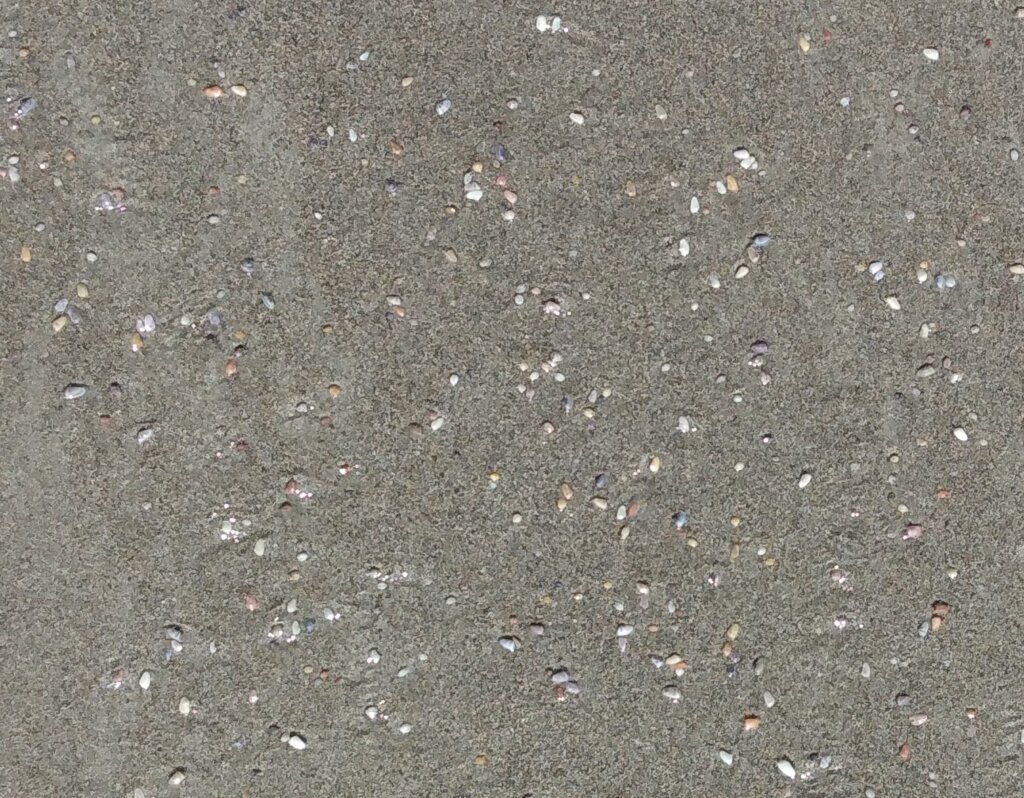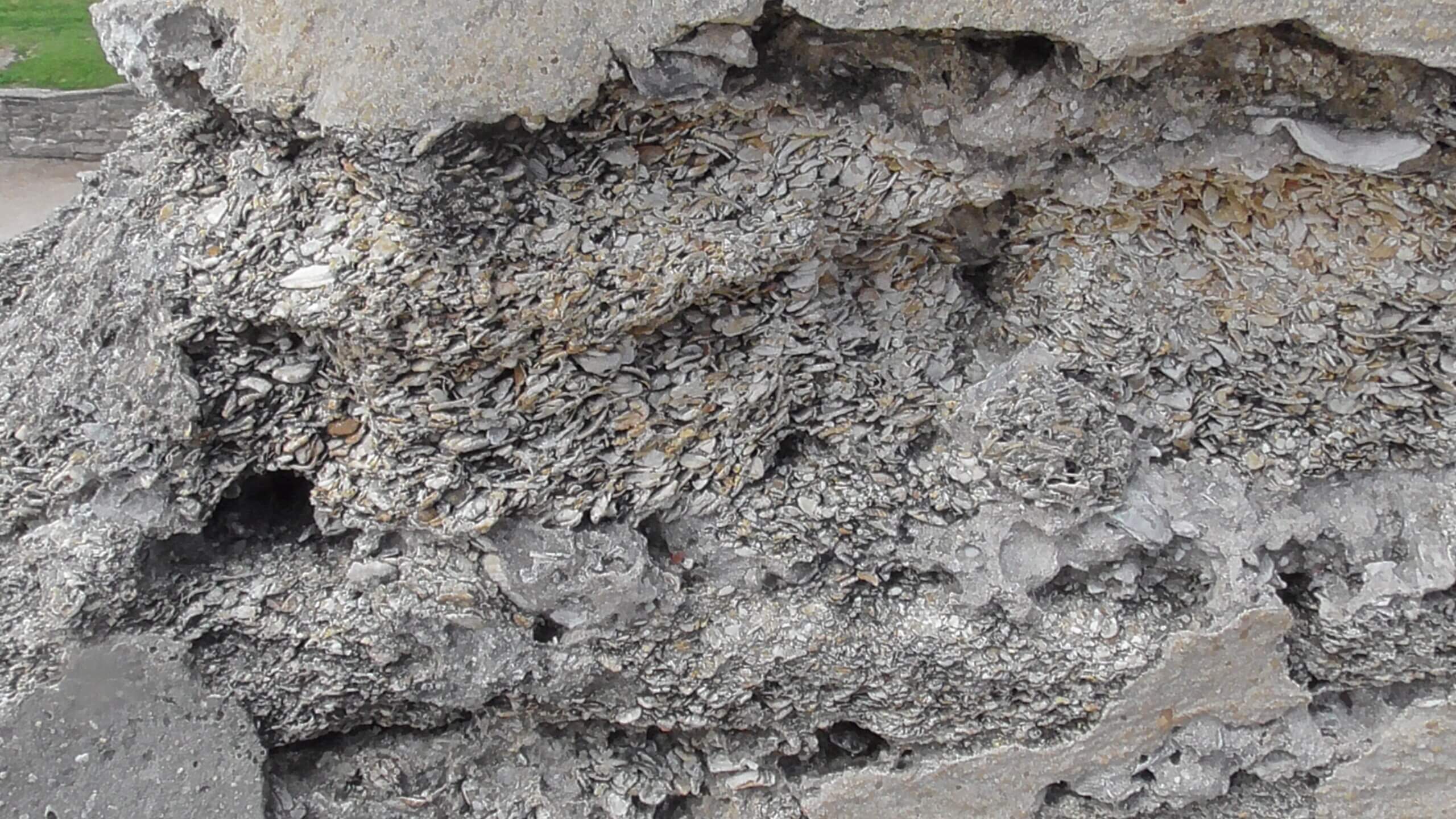Coquina
There are millions, if not billions, of Coquina clams in Florida’s sandy beaches. Known for their highly variable color patterns, coquinas can be found buried just under the surface of the sand in the wave-swept area of the beach known as the swash zone. These small (less than 1 inch) algae filter-feeders are a critical food source for fish, crabs and shorebirds.
Coquina stone is a sedimentary rock composed almost entirely of sand-size fossil debris. The fossils are usually mollusk or gastropod shells and shell fragments. The fossil debris of coquina is composed of calcium carbonate, making coquina a variety of limestone.
Coquina stone allowed Castillo de San Marcos to survive attacks and sieges because of the ability of the walls to absorb cannonballs instead of breaking and crumbling into fragments.

